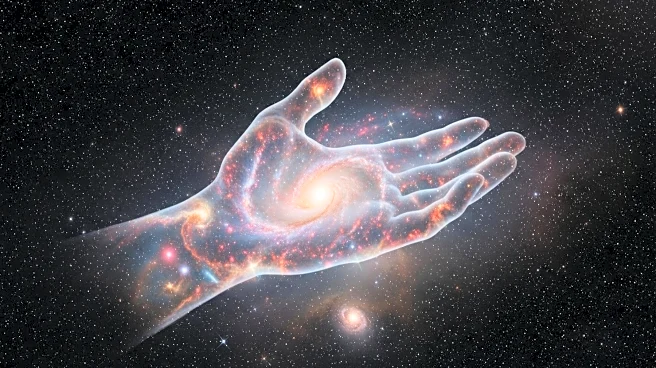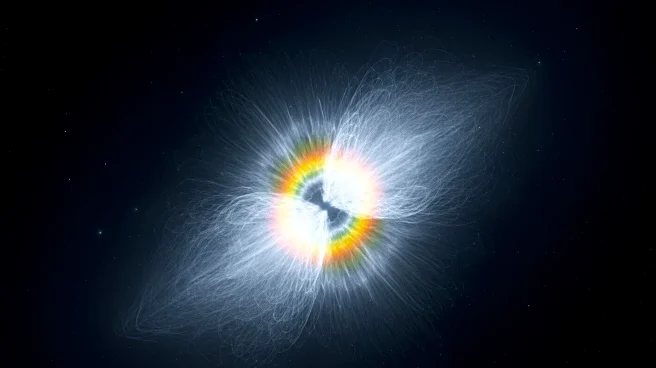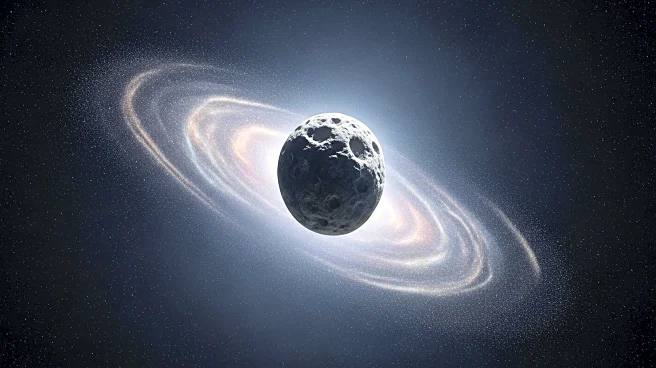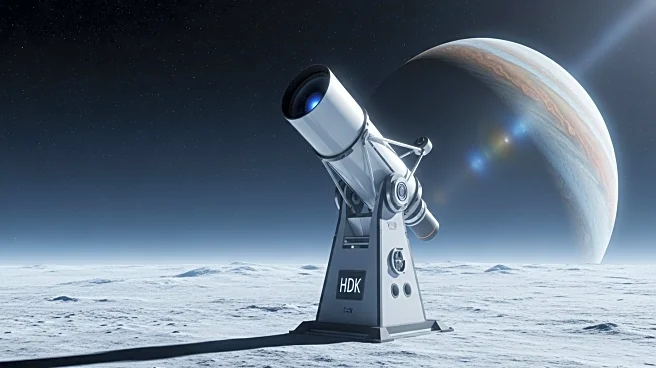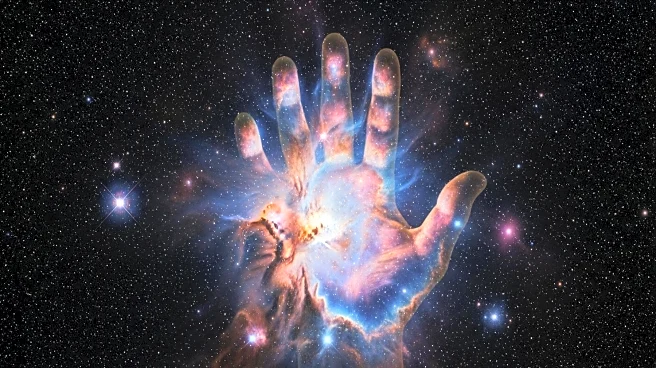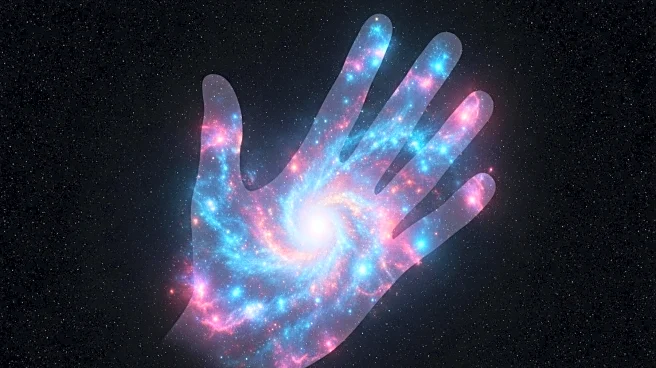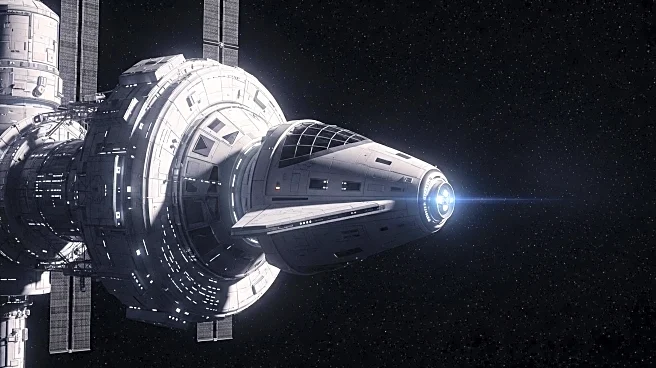What's Happening?
NASA's Chandra Observatory, in collaboration with the Australia Telescope Compact Array, has unveiled new insights into the 'Hand of God' nebula, MSH 15-52. This composite image combines X-ray and radio data to reveal hidden structures and complex filaments within the nebula. At its center lies pulsar B1509-58, a rapidly rotating neutron star that fuels the nebula's creation. The pulsar's powerful magnetic field drives a fierce outflow of particles, forming the nebula's distinctive hand shape. The study provides fresh insights into the aftermath of a stellar explosion and the nebula's unusual appearance.
Why It's Important?
The detailed observations of MSH 15-52 offer valuable information about the interactions between pulsar winds and supernova debris. Understanding these processes can enhance our knowledge of cosmic phenomena and the dynamics of neutron stars. The study also highlights the unique features of the nebula, such as its complex filaments and magnetic field alignments, which differ from typical young supernova remnants. These findings contribute to the broader understanding of stellar evolution and the formation of nebulae.
Beyond the Headlines
The research raises questions about the formation and evolution of MSH 15-52 and RCW 89, as well as the complex interplay between pulsar winds and supernova debris. Further studies are needed to unravel the mysteries of these structures and their unique characteristics. The findings may also have implications for understanding the behavior of magnetic fields and particle dynamics in space.
